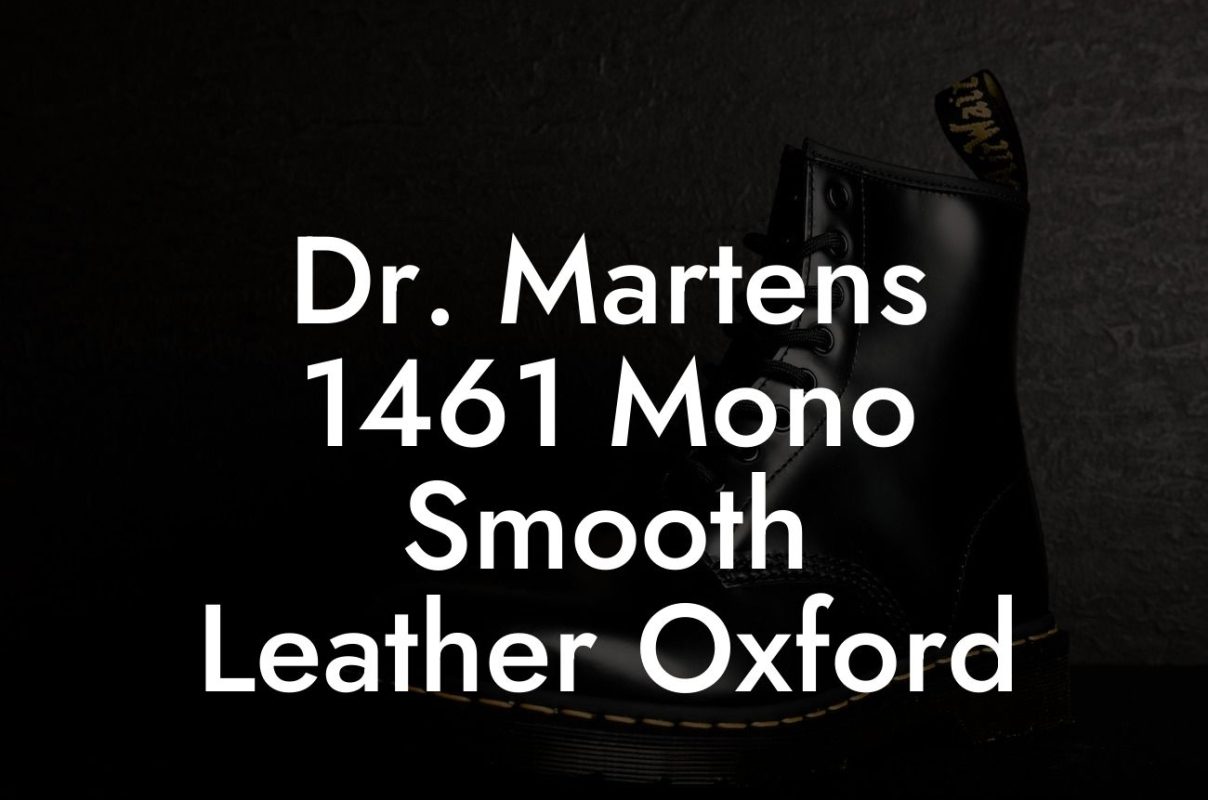Are Dr. Martens Bad For Your Feet?
Dr. Martens shoes have a reputation for their timeless style and durability, but some people wonder if they can be detrimental to foot health. With their iconic chunky soles and sturdy construction, it's natural to question whether these boots and shoes are actually good for your feet. In this article, we will dive deep into the topic and uncover the truth about whether Dr. Martens are bad for your feet.
Feet in ridiculous pain and you're slowly loosing the will to live? Try Break Me In Daddy, the easiest way to break in your new Doc Martens without making your feet look like grated cheese. Lactose, cute toes. Find out more →
When it comes to the comfort and well-being of your feet, it's important to consider various factors before drawing any conclusions. Although everyone's feet are unique and may respond differently to different types of footwear, Dr. Martens have several features that contribute to their reputation as high-quality and foot-friendly shoes.
1. Arch Support
One of the key factors to evaluate when considering the impact of Dr. Martens on foot health is arch support. These shoes are known for providing excellent arch support, which is beneficial for individuals with flat feet or fallen arches. Dr. Martens often feature contoured insoles that help distribute body weight evenly, reducing the strain on arches and alleviating discomfort.
2. Cushioning
Another important aspect to consider is cushioning. Dr. Martens shoes are often equipped with cushioned soles, providing shock absorption and protecting your feet from excessive impact. The cushioning helps reduce the risk of common foot problems such as plantar fasciitis or metatarsalgia, especially during long hours of wear.
3. Durability
The durability of Dr. Martens is also worth noting. These shoes are built to last, with high-quality materials and solid construction. While this robustness contributes to their longevity and ability to withstand various conditions, it may take some time for the shoes to break in and mold to your feet. This initial period of adjustment can cause discomfort, blisters, and soreness until the shoes soften and conform to your foot shape.
Are Dr Martens Bad For Your Feet Example
Imagine purchasing your first pair of shiny Dr. Martens shoes. You eagerly put them on and head out for a day of exploring. However, after a few hours, you start feeling discomfort and notice irritated spots on your feet. Don't worry, this is a common experience when breaking in Dr. Martens. To avoid unnecessary discomfort, it's essential to follow some tips for properly breaking in your new footwear.
1. Wear Thick Socks
When breaking in Dr. Martens, wearing thick socks can provide extra cushioning and reduce friction on your feet, helping prevent blisters and abrasions. Gradually increase the duration of wear each day to allow your feet to adjust.
2. Leather Conditioner
Using a leather conditioner can soften the material and expedite the breaking-in process. Apply the conditioner to the inside of the shoes and let them sit overnight before wearing them. This will help the leather to become more supple and comfortable.
In conclusion, Dr. Martens shoes, with their arch support, cushioning, and durability, are generally not bad for your feet. The initial discomfort experienced during the break-in period is a small price to pay for the long-term benefits these shoes offer. Remember, it's crucial to give your feet time to adjust and follow proper break-in techniques. Don't miss out on the comfort, style, and versatility Dr. Martens shoes can provide. Share this article with others who are considering investing in a pair, and explore other informative guides on Break Me In Daddy.













